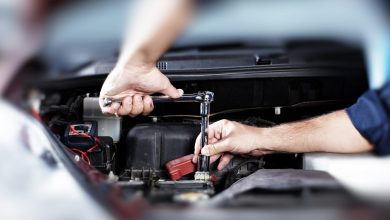The exploration of space is a testament to humanity’s boundless curiosity, innovation, and the relentless pursuit of knowledge. Over the decades, we have made remarkable strides in understanding our universe and venturing beyond our home planet. In this article, we will delve into the captivating history of humanity’s space exploration, the achievements that have shaped our understanding of the cosmos, and the promising future that awaits us as we continue to expand our horizons beyond Earth.
A Historical Odyssey:
1. The Space Race:
- The mid-20th century witnessed the fierce competition between superpowers, culminating in the launch of the first artificial satellite, Sputnik 1, by the Soviet Union in 1957. This marked the beginning of the space race and spurred a series of groundbreaking milestones.
2. Moon Landings:
- In 1969, NASA’s Apollo 11 mission achieved a historic feat with the first human landing on the moon. Astronauts Neil Armstrong and Buzz Aldrin left their footprints on lunar soil, forever expanding humanity’s reach.
3. Space Stations and Beyond:
- The launch of space stations, including the International Space Station (ISS), allowed for prolonged human presence in space and facilitated scientific research in microgravity environments.
Advancements in Space Exploration:
1. Robotic Missions:
- Robotic spacecraft have explored distant planets, moons, and asteroids, providing invaluable insights into planetary geology, atmospheres, and potential habitability.
2. Interplanetary Missions:
- Mars rovers, such as Curiosity and Perseverance, have revolutionized our understanding of the Red Planet, uncovering evidence of past water and potential signs of microbial life.
3. Exoplanet Discoveries:
- Telescopes like Kepler and TESS have revealed the existence of thousands of exoplanets, some of which may possess conditions suitable for life.
4. Commercial Spaceflight:
- Private companies like SpaceX and Blue Origin are revolutionizing space travel by developing reusable rockets and planning missions to make space more accessible.
The Future of Space Exploration:
1. Lunar Exploration Redux:
- Global space agencies aim to return humans to the moon, establishing a sustainable presence and laying the groundwork for future deep space missions.
2. Mars and Beyond:
- Ambitious plans are in place to send humans to Mars, potentially paving the way for interplanetary colonization and addressing fundamental questions about our place in the universe.
3. Asteroid Mining:
- The concept of mining asteroids for valuable resources, including rare metals and water, holds promise for future space ventures and sustainability.
4. Search for Extraterrestrial Life:
- Continued exploration of moons like Europa (Jupiter) and Enceladus (Saturn) could unveil evidence of subsurface oceans and potential habitats for extraterrestrial life.
Humanity’s exploration of space is a testament to our insatiable curiosity, innovative spirit, and unwavering determination. From the early days of the space race to the current era of robotic missions and private spaceflight, our journey beyond Earth has enriched our understanding of the cosmos and sparked the imagination of generations. As we gaze toward the future, the prospects of lunar bases, Mars colonies, and the search for life beyond our planet beckon us to push the boundaries of possibility and continue our grand cosmic voyage. The stars, planets, and mysteries of the universe await our exploration, and the future of humanity’s space endeavors holds the promise of awe-inspiring discoveries yet to come.
Unveiling the Enigma: Theories Surrounding Aliens and UFOs
The fascination with the possibility of extraterrestrial life and unidentified flying objects (UFOs) has captured the imagination of humanity for decades. From science fiction to alleged encounters, the mysteries of the cosmos have given rise to a plethora of theories and speculations. In this article, we will delve into some of the most intriguing theories surrounding aliens and UFOs, exploring the diverse range of beliefs and ideas that have fueled this enduring enigma.
Theories Surrounding Extraterrestrial Life:
1. Fermi Paradox:
- This theory questions the apparent contradiction between the high probability of extraterrestrial civilizations in the universe and the lack of evidence for their existence. It raises queries about why we have not yet made contact with advanced alien civilizations.
2. Rare Earth Hypothesis:
- Some theorists propose that complex life, like humans, may be exceptionally rare in the universe due to the unique combination of factors required for Earth-like conditions.
3. Zoo Hypothesis:
- This speculative idea suggests that extraterrestrial civilizations are aware of Earth’s existence but are intentionally avoiding contact to allow humanity to develop and evolve without interference.
4. Panspermia:
- Panspermia proposes that life on Earth might have originated from microorganisms or organic materials transported through space on comets or asteroids.
UFO Theories and Encounters:
1. Extraterrestrial Visitation:
- This theory suggests that UFO sightings and encounters are evidence of advanced alien civilizations visiting Earth. Believers argue that these UFOs are spacecraft operated by extraterrestrial beings.
2. Secret Military Projects:
- Some theories propose that UFO sightings are actually advanced aircraft or experimental technologies developed by secretive government agencies.
3. Time Travelers:
- Speculation abounds that UFOs could be time machines from the future, piloted by humans or other beings who have mastered the manipulation of time.
4. Natural Phenomena:
- Certain UFO sightings might be attributed to natural phenomena, such as atmospheric anomalies, meteors, or optical illusions.
5. Psychological and Social Factors:
- Some theorists suggest that UFO sightings and encounters could be influenced by psychological factors, social beliefs, and mass hysteria.
Controversy and Exploration:
1. Roswell Incident:
- The alleged crash of an unidentified object near Roswell, New Mexico, in 1947 has fueled conspiracy theories of a government cover-up related to alien technology.
2. Crop Circles:
- Intricate patterns in crop fields have sparked speculation about extraterrestrial communication or advanced energy technologies, although many crop circles are proven to be human-made.
3. Abduction Claims:
- Some individuals claim to have been abducted by aliens and subjected to examinations or experiments, leading to a range of psychological, cultural, and scientific interpretations.
The theories surrounding aliens and UFOs offer a captivating glimpse into the human imagination and our insatiable curiosity about the cosmos. While some theories are rooted in scientific inquiry and evidence, others remain firmly within the realm of speculation and science fiction. As we continue to explore the mysteries of the universe, our quest for answers regarding extraterrestrial life and UFO phenomena serves as a reminder of the boundless potential for discovery and the enduring allure of the unknown. Whether fueled by scientific exploration, personal experiences, or cultural influences, the theories surrounding aliens and UFOs contribute to a rich tapestry of human exploration and wonder.


















